|
After a particularly long winter, I was looking forward to seeing spring flowers coming through the last bits of snow and ice. For years I didn't pay much attention to identifying them. They were the usual bunch of anonymous white flowers and I took them for granted, preferring to seek out colourful, but tiny, violets as my official harbinger of spring. 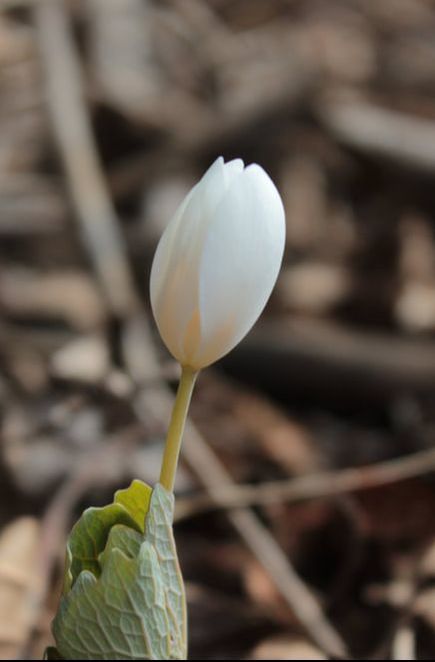 However, last year my eye was caught by some dusty green leaves that curled protectively around a single white flower, unlike strawberry blossoms or the various anemones surrounded by a whorl of leaves. I mentioned them to my neighbour. She said they're called bloodroot. She was born and raised in this area and recalls breaking their stems as a little girl and using the orange pigment that oozed out to colour her face. I was fascinated by the name and looked them up in my Newcomb's Wildflower Guide. Sanguinaria canadensis: "White flowers growing singly, 1 -1 1/2" wide; the single leaf with 5 - 9 deep lobes. Petals 8 to 12, rarely pinkish. The juice is orange-red, whence the common name. 3-6" high when in bloom, taller later. Rich woods. Early spring. Poppy Family." 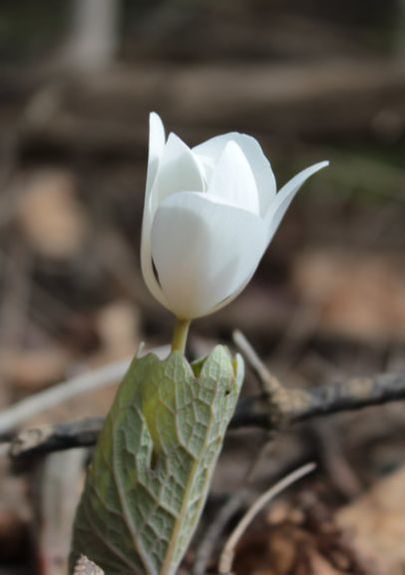 Poppy family! Who'd have thought? According to Zichmanis and Hodgins' Flowers of the Wild: Ontario and Great Lakes Region, their range is "Northeastern North America; in Ontario north to upper southern deciduous-evergreen forest." That would be the "bush" around here. They also mentioned that it was "formerly used treat eczema and skin cancer." As a member of the poppy family (Papaveraceae), it must contain a rich store of potent phytochemicals - biologically active compounds found in plants. 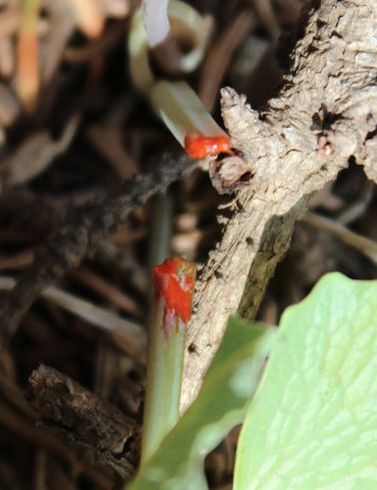 Red latex oozing out of a broken stem of bloodroot. Red latex oozing out of a broken stem of bloodroot. Sure enough, one websource among many mentions the uses Indigenous peoples found for the bloodroot - from use as a red dye to treating ulcers and skin conditions, from soothing sore throats (in small doses) to expelling phlegm and inducing vomiting (in high doses). And a dilute solution could stem bleeding in an axe wound. So how can one tiny plant be capable of so much? Is this all hype? Certainly when you read some of the more overwrought CAM (complementary and alternative medicine) websites, extract from this little plant can cure just about everything. One website, adds "This information is being suppressed from you by the mainstream media and the medical establishment." Perhaps the academic institutions, like the University of Minnesota Medical School, whose articles this same website quotes are not part of the "medical establishment"? Anyhow... I thought I'd go back to my own roots in chemistry and see if anyone in a lab has parsed out this magic red potion. I found a comprehensive 2016 review article in the International Journal of Molecular Sciences (IJMS), with the promising title: "Sanguinaria canadensis: Traditional Medicine, Phytochemical Composition, Biological Activities and Current Uses." After following up a tangent on whether the IJMS was one of those nasty predatory journals that will publish anything as long as the author pays a fee - mixed results but IJMS is currently being cited more often as legit and the article looks like a good review of valid research - I read on. 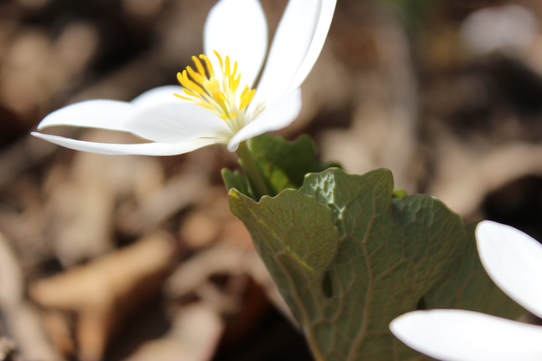 That red latex, oozing out of the bloodroot stem and also found in its roots and rhizome, is rich with phytochemicals known as alkaloids. This group contains many physiologically active compounds we are quite familiar with: morphine, quinine, nicotine, cocaine, and (my favourite) caffeine. Bloodroot contains about eight alkaloids, the major one being sanguinarine, which some researchers report as having cancer fighting potential. The problem with using a plant extract as medicine is the variability of the concentrations of the various active phytochemicals. One study showed that the concentration of sanguinarine can vary as much as 15 fold depending on which part of the plant the extract is taken from, what time of year the plant was picked, or where it was growing. And how do the other alkaloids interact with it? Can some have elevated levels that would make them toxic? Turns out people who use a bloodroot based mouthwash, for its antibacterial activity, over a long period of time are at risk of leukoplakia, a pre-malignant condition. Google "Black Salve", a topical CAM cancer treatment that sometimes (and in what concentration?) contains bloodroot extract, and you'll get miracle cures and horror stories. I imagine the indigenous people who collected bloodroot for medicine became familiar with its properties and knew the best time and place to harvest it and how to process it. And the modern fields of ethnobotany and ethnopharmacology continue to build on that knowledge methodically and respectfully. Or maybe I'm just not very good at spotting conspiracies?
0 Comments
Your comment will be posted after it is approved.
Leave a Reply. |
AuthorI'm Elizabeth Pszczolko, a writer living in the woods outside Thunder Bay, Ontario. As a child, I used to keep scrapbooks of nature stuff - drawings, musings, poems. This is my grown up (I use the term loosely) version of those long lost works. For more on what inspires this blog, please see the About page. Archives
November 2023
|
Proudly powered by Weebly

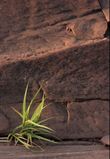
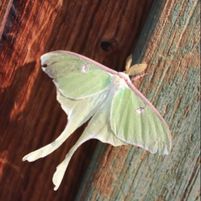
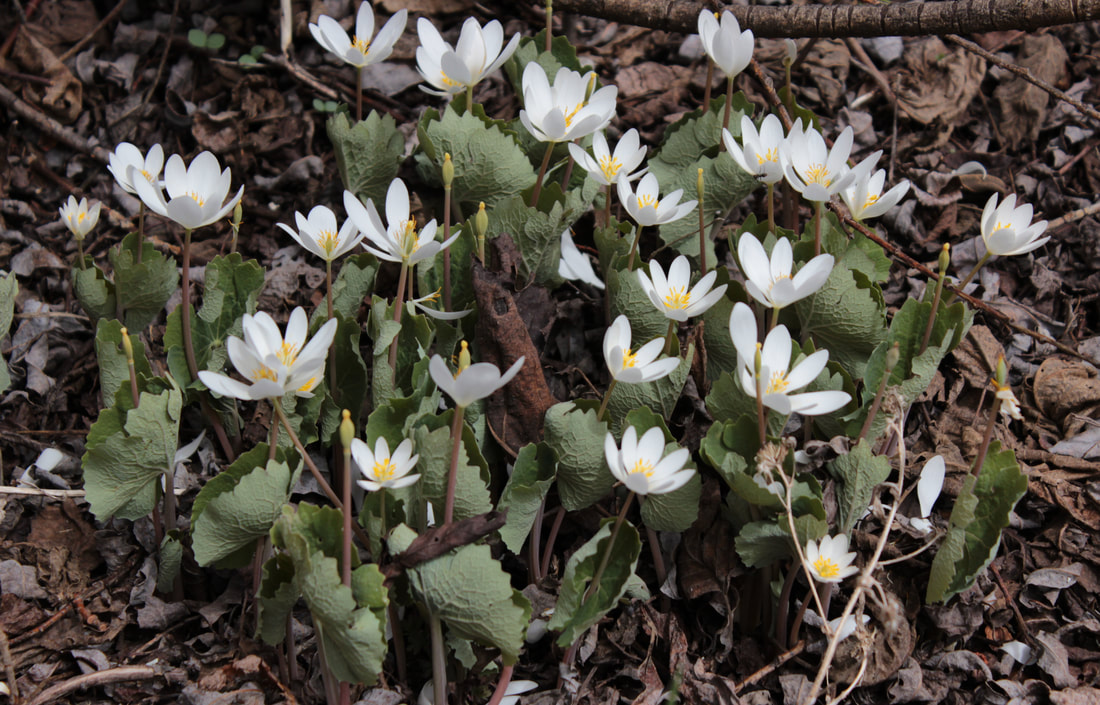
 RSS Feed
RSS Feed